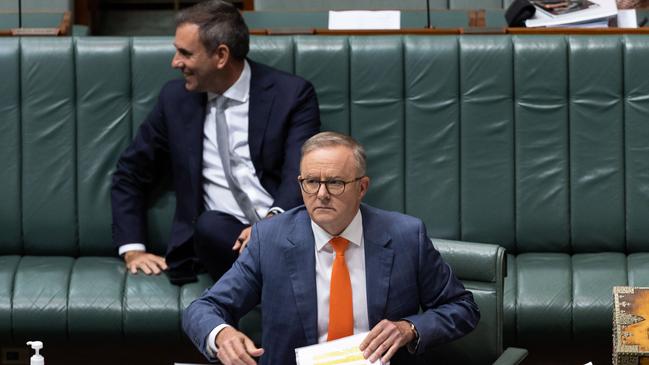
The only monthly respite for anyone with a mortgage or other types of variable loans came in January, because the Reserve Bank doesn’t meet at that time.
If this increase is another 0.25 per cent, as the previous four have been, it will push the cash rate up to 3.60 per cent. That’s a full 3.50 per cent lift since the cash rate sat at the historic low of just 0.10 per cent – the figure Anthony Albanese couldn’t recall on day one of the election campaign.
Depending on how well you’ve done negotiating your variable interest repayments, for many Australians those monthly interest bills have at least doubled. It’s one hell of an increase at a time when inflation is soaring and bottlenecks in the economy are worsening the cost of living pressures.
So what comes next? We will wait to see what the RBA tells us in the wake of Tuesday’s adjustment. Not that its prognosticating is worth all that much, after the Governor previously predicted rates wouldn’t head north until 2024.
As far as failed predictions go, that one was right up there.
The whole point of the RBA chasing inflation with monetary policy decisions that bump up the cash rate is to slow people’s spending and this slow the economy. Doing so is one of the primary ways to get inflation back down.
We had a lead indicator that it’s likely topped out, which suggests if more rate rises are to come, the peak might not be that far off. Many economists think one more should just about do it.
Either way, what comes next will be economic pain in the shape of an economy-wide slowdown. Rising unemployment generally goes hand in glove with such an outcome. This is when tumbling house prices can really take off: once people are forced to sell, because they can no longer afford the repayments.
Interest rate rises exacerbate that situation.
If the slow down becomes worse than hoped, guess what? The RBA will start dropping the cash rate in the hope of stimulating economic growth. But only if inflation has been brought under control. If not, the pain could be more acute, with little or no relief on the monetary policy side.
Which brings us back to the political class. Pressure will build – as times become tougher – for fiscal assistance, at least of the targeted variety. The May budget might come too soon for that pressure to have been brought fully to bear, but it will likely be sitting front and centre by the end of this year.
Don’t forget next year we’ll be in an election year, assuming Albo seeks to return the traditional timing of federal elections – the end of the year – rather than when it’s due around May of 2025.
While predictions are a dangerous business, it’s hardly going out on a limb to suggest that the economy will dominate the political debates this year and next, as Australians grapple with challenges which many haven’t faced before.
In that climate the postmaterial issues of the voice and perhaps even emissions reductions might become afterthoughts for voters worried about the family budget and saving their homes.
Peter van Onselen is a professor of politics and public policy at the University of Western Australia and Griffith University








Tuesday’s interest rate rise represents the 10th consecutive increase since the 0.25 per cent increase during last year’s May election campaign.